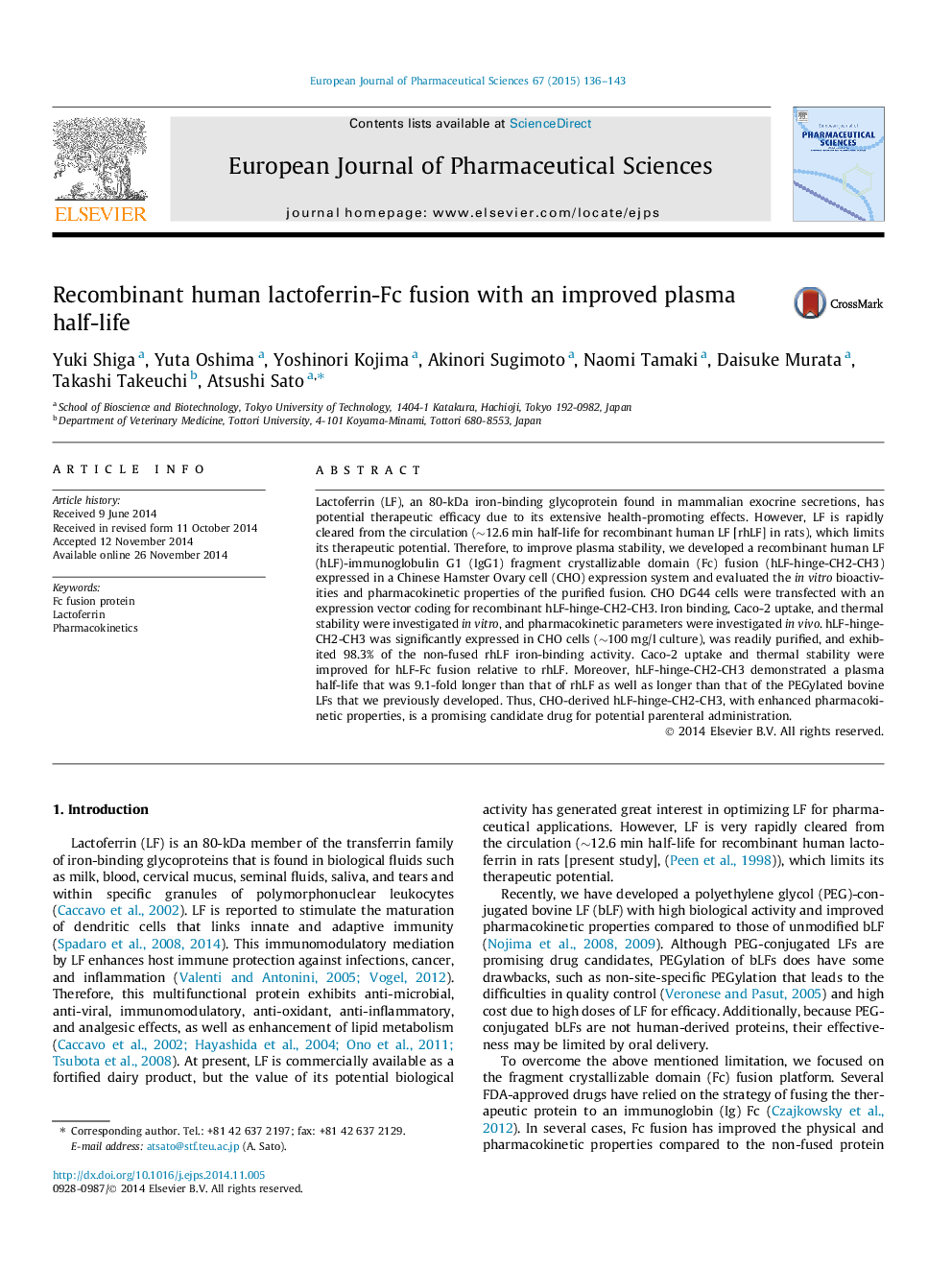| Article ID | Journal | Published Year | Pages | File Type |
|---|---|---|---|---|
| 5809902 | European Journal of Pharmaceutical Sciences | 2015 | 8 Pages |
Lactoferrin (LF), an 80-kDa iron-binding glycoprotein found in mammalian exocrine secretions, has potential therapeutic efficacy due to its extensive health-promoting effects. However, LF is rapidly cleared from the circulation (â¼12.6Â min half-life for recombinant human LF [rhLF] in rats), which limits its therapeutic potential. Therefore, to improve plasma stability, we developed a recombinant human LF (hLF)-immunoglobulin G1 (IgG1) fragment crystallizable domain (Fc) fusion (hLF-hinge-CH2-CH3) expressed in a Chinese Hamster Ovary cell (CHO) expression system and evaluated the in vitro bioactivities and pharmacokinetic properties of the purified fusion. CHO DG44 cells were transfected with an expression vector coding for recombinant hLF-hinge-CH2-CH3. Iron binding, Caco-2 uptake, and thermal stability were investigated in vitro, and pharmacokinetic parameters were investigated in vivo. hLF-hinge-CH2-CH3 was significantly expressed in CHO cells (â¼100Â mg/l culture), was readily purified, and exhibited 98.3% of the non-fused rhLF iron-binding activity. Caco-2 uptake and thermal stability were improved for hLF-Fc fusion relative to rhLF. Moreover, hLF-hinge-CH2-CH3 demonstrated a plasma half-life that was 9.1-fold longer than that of rhLF as well as longer than that of the PEGylated bovine LFs that we previously developed. Thus, CHO-derived hLF-hinge-CH2-CH3, with enhanced pharmacokinetic properties, is a promising candidate drug for potential parenteral administration.
Graphical abstractDownload high-res image (72KB)Download full-size image
